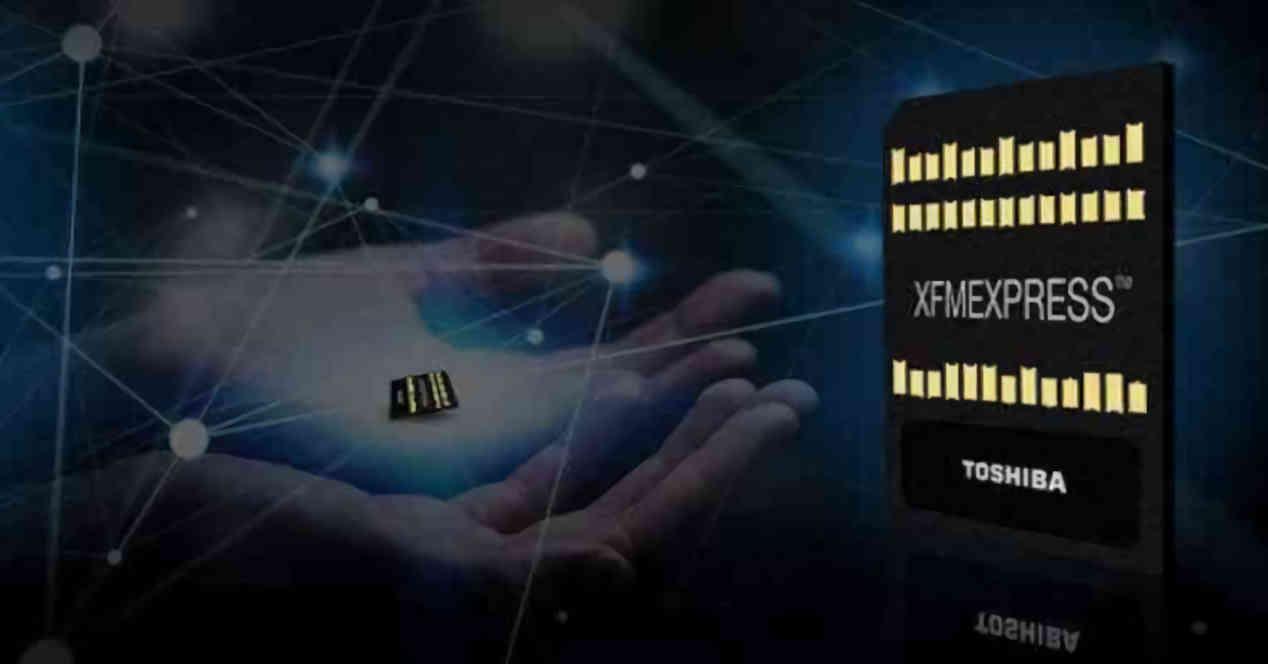- First of all, the memory card does not have the necessary hardware to access and manipulate your data, it cannot access its own content by itself. We therefore need to connect it to the corresponding interface that will perform this task, which brings us to the second point.
- And it is that the reading and writing devices of a memory card must be accessible from the outside, usually within the housings of the devices themselves to facilitate their removal and replacement. Although there are exceptions such as mobile phones where the interface is internal.
- They have to be portable, which is why they are protected by a plastic case that leaves everything covered except the intercom pins.
- The memory used to store data is usually NAND Flash.
Memory cards have become popular due to the fact that they allow data to be transmitted between different devices via portable storage inexpensively and without having to install the media of a floppy disk drive. The first systems to use them were video game consoles when they adopted the CD. Later digital cameras did, the first went with a floppy disk and finally the PC.
Today, the type of memory card is SD in its various variations and many PCs are sold with an integrated reader, this one succeeding the classic floppy disk drives.
What is XFM memory?
The acronym XFM refers to a recently approved JEDEC standard for the creation of next-generation memory cards. The acronym stands for Crossover Flash Memory. With the new standard, they hope to completely replace SD and UFS standards once and for all to adopt NVMe in memory cards as well.
The new concept uses the PCI Express interface just like M.2 storage drives, but with a number of important differences. In the first place, they will not use the same communication interface and, therefore, we will not be able to connect a microSD card in an interface for M.2 and vice versa. The second difference is that XFM memory cards will not use four PCI Express lanes, but 1 or 2 of them, so the bandwidth will be less. We’re also not going to view DRAM chips as a cache for NVMe, so while this is a qualitative leap in bandwidth and access speed over current memory cards, they are not. are not equal in performance to NVMe solid state drives.
The only problem that exists is that a higher data transfer per second means higher consumption, so it is very likely that this type of card will not be standardized in cell phones or that we will see a future. variant called microXFM with a single PCI Express lane at a slower speed.
Why is XFM memory needed?
If you have a Nintendo Switch and play with it, you’ll have noticed how slow it is when it comes to downloading from its digital store or just loading the games. This is because it uses an SD interface to access data from game cards based on this standard.
We have another example in portable consoles based on PC hardware like the Steam Deck or the Aya Neo, where in both we can see how an NVMe SSD has been added, which takes up a lot of space, generates a lot of heat and consumes a lot of energy. An XFMEXPRESS card reader would be the ideal solution for this type of system. As for the successor to Nintendo’s hybrid console.
And let’s not forget the professionals who shoot video content with their professional cameras. RED cameras, for example, use solid state drives to store data at high speed. The inclusion of XFMEXPRESS memories will make these units lighter and bring super high resolution video creation closer to ordinary people.
In any case, the appearance of the XFM standard translates into a significant qualitative leap in ultralight computers and tablets, especially those that have to depend on very low speed hard drives and mediocre performance, as well as SD interfaces that go with it. the pedals.
Is this a replacement for the current M.2?
Well, no they are not because they cannot achieve the same performance because on the one hand they are DRAM free and on the other hand they have lower bandwidth. They are not NVMe SSDs, nor are they replacing them, but rather, its purpose is to provide the bandwidth that low-performance, low-power devices require.
What we’re going to see is a built-in version of that, eXFM, the same way eMMC and eUFS exist. That is, a soldered-to-the-board version that we’ll surely see in some ultralight laptops, iPad Pro-style tablets, and next-gen handheld video game consoles. In other words, it is not about replacing NVMe SSDs, but it is a way to bring a good part of the advantages of these to the most modest devices in terms of consumption.












